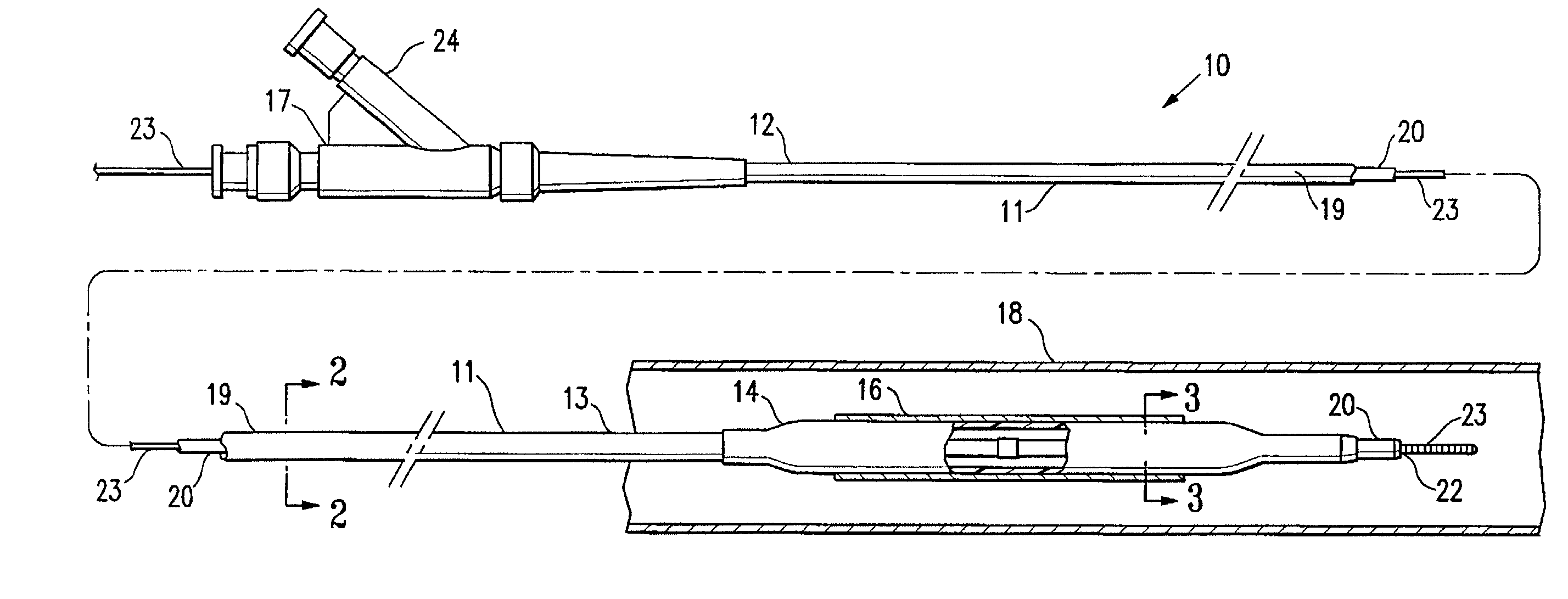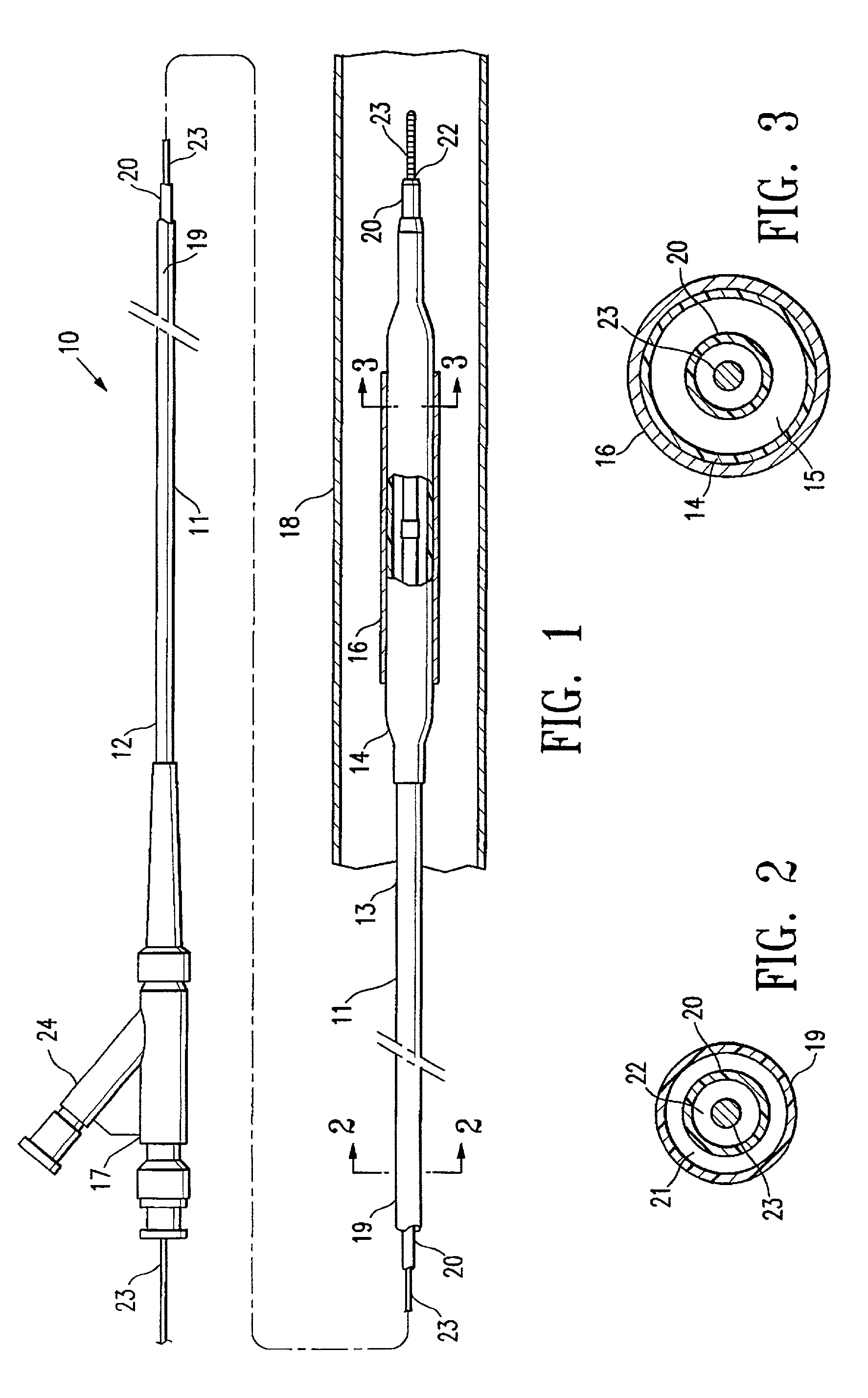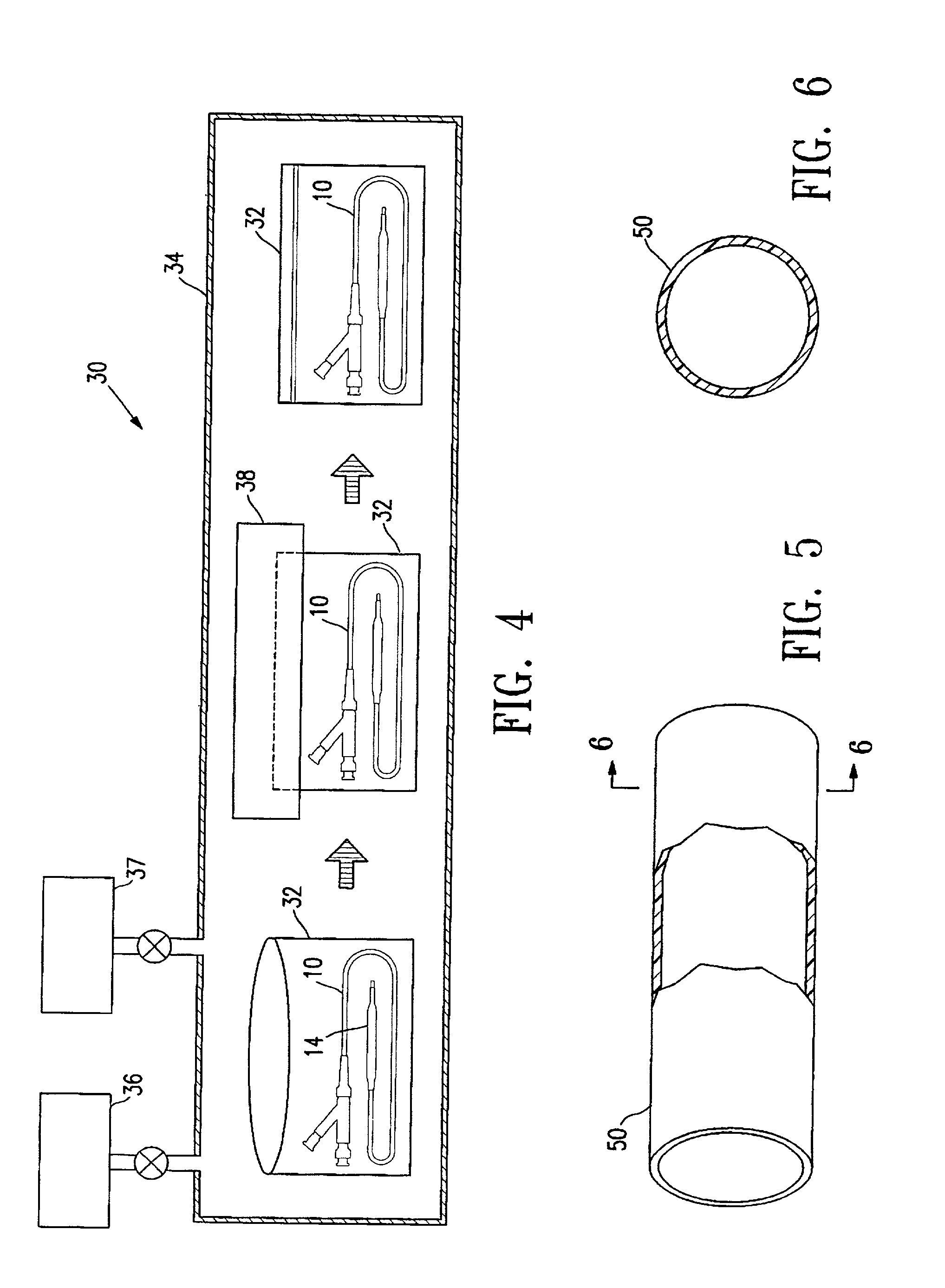Method of sterilizing a medical device
a technology of medical devices and catheters, applied in the field of medical devices, can solve the problems of reducing the trackability and crossability of the catheter in the patient's vasculature, affecting the treatment effect, so as to increase the wall thickness of the balloon, and avoid significant degradation of polymeric materials.
- Summary
- Abstract
- Description
- Claims
- Application Information
AI Technical Summary
Benefits of technology
Problems solved by technology
Method used
Image
Examples
Embodiment Construction
[0020]FIG. 1 illustrates an over-the-wire type stent delivery balloon catheter 10 embodying features of the invention. Catheter 10 generally comprises an elongated catheter shaft 11 having a proximal end 12, a distal end 13, and an inflatable balloon 14 on a distal shaft section. An expandable stent 16 is mounted on balloon 14 for implanting in the patient's body lumen 18. In the embodiment illustrated in FIG. 1, the shaft 11 comprises an outer tubular member 19 and an inner tubular member 20. As best shown in FIGS. 2 and 3, illustrating transverse cross sections of the catheter 10 shown in FIG. 1, taken along lines 2—2 and 3—3, respectively, outer tubular member 19 defines an inflation lumen 21, and inner tubular member 20 disposed within the outer tubular member lumen 21 defines a guidewire lumen 22 configured to slidingly receive a guidewire 23. Inflatable balloon 14 is disposed on a distal section of catheter shaft 12, having a proximal end sealingly secured to the distal end of...
PUM
| Property | Measurement | Unit |
|---|---|---|
| pressures | aaaaa | aaaaa |
| pressure | aaaaa | aaaaa |
| pressure | aaaaa | aaaaa |
Abstract
Description
Claims
Application Information
 Login to View More
Login to View More - R&D
- Intellectual Property
- Life Sciences
- Materials
- Tech Scout
- Unparalleled Data Quality
- Higher Quality Content
- 60% Fewer Hallucinations
Browse by: Latest US Patents, China's latest patents, Technical Efficacy Thesaurus, Application Domain, Technology Topic, Popular Technical Reports.
© 2025 PatSnap. All rights reserved.Legal|Privacy policy|Modern Slavery Act Transparency Statement|Sitemap|About US| Contact US: help@patsnap.com



